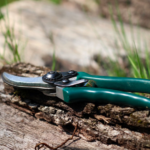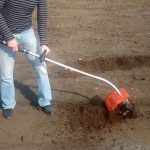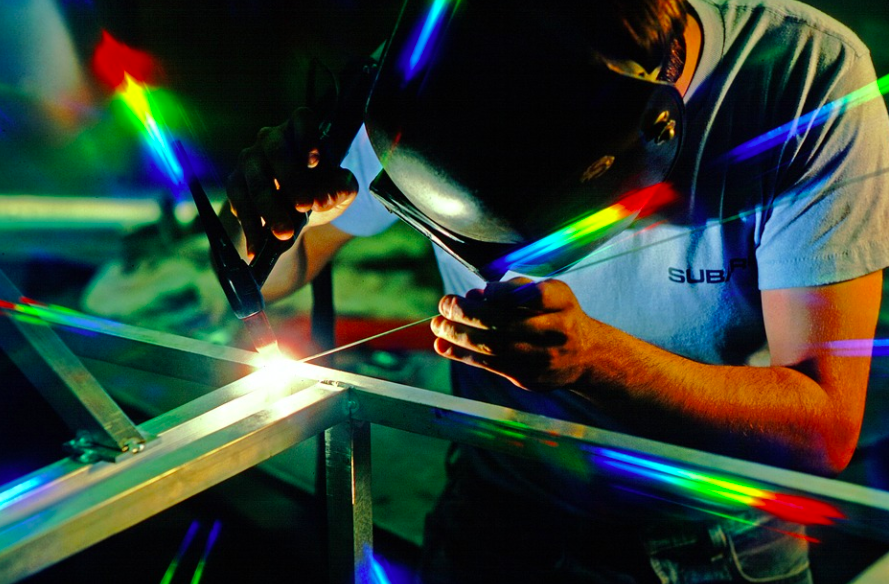Cultivator for the garden: a luxury or a necessary household item?
Manual processing of a summer cottage - are you kidding? How long can you stand in that vegetable garden or garden? It's time to mind your own business: relax, be with your family, read a book, in the end. What prevents you from mechanizing your work? For example, buy a new cultivator for the beds.
In our article we will look in detail at what a cultivator is. What are its features, technical characteristics and varieties. Let's plunge into the world of gardening together!
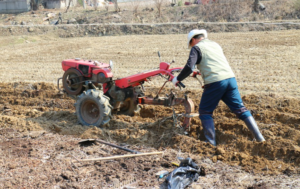
The content of the article
What is a cultivator
The job of agricultural equipment is to cultivate the soil. A cultivator is a means of cultivating land. It is purchased by small farmers and summer residents who are tired of plowing the field from morning to night.
Cultivators for dachas come in steam and row-crop varieties. Why do you need the first cultivator: to cultivate the land for the upcoming sowing. The second option already exists for working with ready-made crops.
Cultivators are often equipped with additional equipment (attachments). But this is not required to solve basic problems - just waste the extra money.
Sheds should only be purchased if a walk-behind tractor (a multifunctional alternative to a cultivator) simply cannot cope on the site because it is too bulky. That’s why I use cultivators for small flower beds, gardens, or between beds.
What else is a cultivator needed for? It loosens the soil and removes weeds. Additionally, the device can control the degree of soil saturation with moisture and hill up the beds.
How to choose a cultivator for a summer residence: we understand in detail each of the parameters
To really get equipment that is worthy of your money, you need to read a little about such a tool as a cultivator. The more knowledge you have, the easier it is to choose a device specifically for your needs. And not just like that - so that it happens.
The motor is the basis of the cultivator
The motor part does more work than other parts. Therefore, it is the most expensive among cultivators.
Engines differ according to the method of power supply: electric and gasoline. If for the first the repair is not so complicated, and maintenance needs to be carried out less often than usual, then for the second option, whole hemorrhoids can happen.
Therefore, when choosing a cultivator, immediately pay attention to its engine. Below we have given several examples of engines that showed only the best side by country:
- Japanese - Honda, Subaru;
- American. Such as Briggs & Stratton. Expensive - rich;
- South Korean Hyundai;
- German engine models from KS;
- Chinese. An outstanding analogue of Honda is Loncin. Moreover, it is several times cheaper than its Japanese competitor.
The presented options start up in a few seconds. Both in summer and in cold weather. Believe me, not every engine can start at -5 Celsius, or even lower.
How to choose a cultivator based on digging width and depth
Cultivators can have several cutters. Their width varies: from several tens of centimeters and up to a meter.
The wider the knife, the higher the performance of the device as a whole. Wide cutters must also be installed on a powerful engine. If you did everything the other way around (wide on a weak motor), the performance will even decrease from usual.
Another disadvantage of “width” is that you will not be able to cultivate the soil near walls, fences or between obstacles.
For areas of different formats and sizes, it is better to take collapsible knives. They are suitable for any cultivator format and come in different lengths. Put it at least 20 cm, at least 60 or 100.
The plowing depth is determined by the coulter or lift (for electric cultivator models). For simple work, a depth of about 10 cm is sufficient. The maximum value is 25 cm. Suitable for weeds and leveling the area.
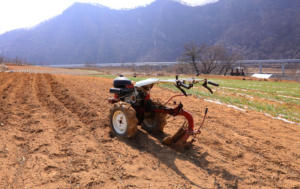
What does a cultivator gearbox do?
For gasoline models, also inquire about the gearbox: whether it is there or not. If it is present, you can select the operating speed of the device.
For engines with 2-3 gears, you can tune to hard and soft ground. For models with 4-6 gears, heavy canopies can already be installed.
Some gasoline cultivators can be equipped with reverse gear. Reverse gear increases maneuverability on the ground and provides a step for turning and turning the equipment. As a rule, electrical analogues, unfortunately, do not have such a function.
What is the gearbox for in a cultivator?
The job of the gearbox is to transmit rotation from the motor with the drive to the working base. The power and productivity of the device depends on its components. There are three types of gearboxes:
- The worm type is an inexpensive and simple option. It consists of a worm base (attached to the motor shaft) and a gear.The system is suitable for low-power cultivators.
- On a chain. Several sprockets and a chain connect the drive and the drive shaft. This gearbox option is the most popular among manufacturers. It's inexpensive. And, at the same time, reliable.
- Gear - consists of a system of gears. Since it can withstand the heaviest load, it is installed only on powerful engines of cultivators and walk-behind tractors.
How to choose attachments for a cultivator
You can install several additional parts – hanging accessories – to the device. They expand the cultivator's abilities. And most importantly, they give you a chance to compete with walk-behind tractors.
Sheds allow you to plow, cut harrows, clear snow, dig potatoes and dozens of other household items. Here are a few attachments that will suit any gardener and gardener: aerator, potato planter and digger, hiller, plow, snow blower.
Please also take into account the fact that not all cultivators can “accept” attachments. With an electric version or a gasoline version with low power, you simply do not have enough draft power to work productively on the territory.
Attachments are not included with cultivators and walk-behind tractors, only cutters. And that's the problem. You have to buy the necessary attachments: look for them in stores, compare models and manufacturers, etc.
Hitch is an additional option. If you don't need a plow or hiller, don't buy it. That's all! No need to look at your neighbor who has 50 nozzles. And he will never use everyone.
We recommend purchasing attachments from the same manufacturer as your cultivator. Usually, companies immediately provide mounts for their devices - they can be “special”. And so much so that other models simply won’t fit.
The grouser is something without which a heavy canopy does not work. It increases the mass of the entire structure, but also increases the draft force of the device. Sometimes this is exactly what average cultivators lack.
Do you use a cultivator? Which is better: a cultivator or a walk-behind tractor? Write to us in the comments!

